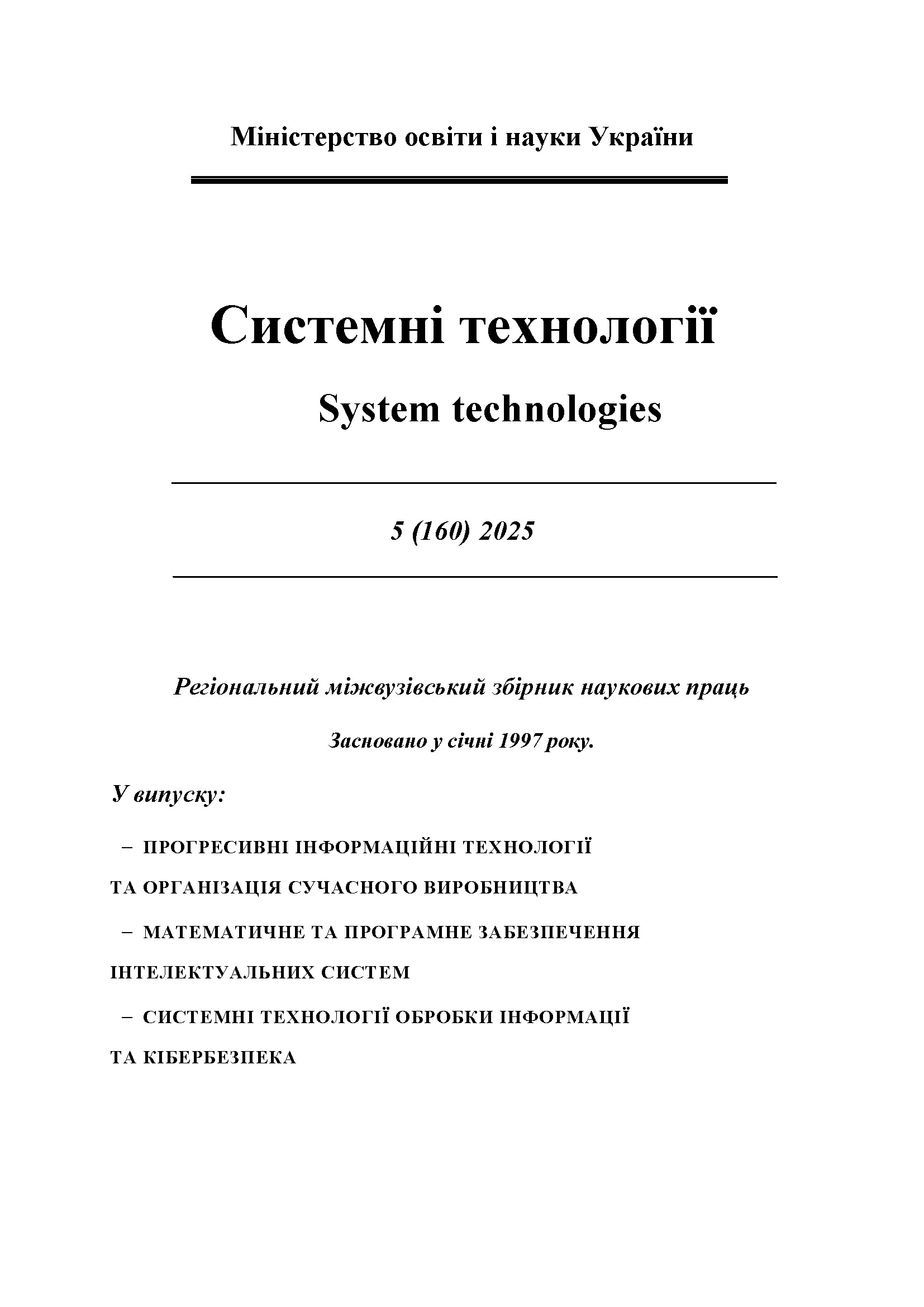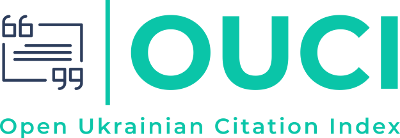Analysis of automated mapping techniques for changes in water bodies
DOI:
https://doi.org/10.34185/1562-9945-5-160-2025-17Keywords:
water resources, water bodies, automated mapping, satellite monitoring, remote sensing methods, spectral indices, machine learningAbstract
InInland water resources are vital components of the water system for every country, and their supply is strategic. Growing demand for water and climate change are exacerbating water management problems in arid and semi-arid regions, which experience water shortages due to low and irregular rainfall and high evapotranspiration. Monitoring inland waters is of strategic importance for a country's development. Assessing the ecological status, volume and area of water bodies is key to analysing and forecasting the water balance and spatial distri-bution among regions. Monitoring water bodies is particularly relevant in countries most af-fected by rapid climate change. As a result of climate change in Ukraine, there is a negative process of deterioration of natural moisture conditions, as a result of which areas of exces-sive moisture are disappearing in the Polissya zone, and the process of desertification has begun in the south. Ground-based measurements to assess changes in the area of water bod-ies are an expensive and resource-intensive approach, which is particularly difficult in re-mote areas. The article discusses the main methods of automated mapping of changes in wa-ter bodies using remote sensing data. The use of heterogeneous data in combination with a combination of methods based on spectral indices and machine learning demonstrates the best results. The article discusses automated mapping methods using remote monitoring and the applicability of these methods for analysing water resources in Ukraine. The main classi-cal methods are based on the use of spectral indices, machine learning and image threshold-ing. The use of heterogeneous data in combination with a combination of methods demon-strates the best results. It should be noted that such methods do not allow obtaining an accu-rate threshold value for relatively small water bodies. The method of mapping surface waters using radar images and the method of selecting the optimal threshold, the reference water mask, showed the best results.
References
Biemans, H.; Haddeland, I.; Kabat, P.; Ludwig, F.; Hutjes, R.W.A.; Heinke, J.; von Bloh, W.; Gerten, D. Impact of reservoirs on river discharge and irrigation water supply during the 20th century. Water Resour. Res. 2011, 47. [Google Scholar] [CrossRef]
Haines-Young, R.; Potschin, M. Common International Classification of Ecosystem Ser-vices (CICES) V5.1; Technical Report; Fabis Consulting Ltd.: Nottingham, UK, 2018. [Google Scholar]
Grizzetti, B.; Lanzanova, D.; Liquete, C.; Reynaud, A.; Cardoso, A. Assessing water eco-system services for water resource management. Environ. Sci. Policy 2016, 61, 194–203. [Google Scholar] [CrossRef]
Shaad, K.; Souter, N.J.; Vollmer, D.; Regan, H.M.; Bezerra, M.O. Integrating Ecosystem Services Into Water Resource Management: An Indicator-Based Approach. Environ. Manag. 2022, 69, 752–767. [Google Scholar] [CrossRef] [PubMed]
Аналітичні матеріали, наукові прогнози та пропозиції НААН щодо переліку заходів, реалізація яких сприятиме забезпеченню водної та продовольчої безпеки України в умовах змін клімату URL: http://naas.gov.ua/slide/v-umovakh-suchasnikh-zm-n-kl-matu-r-ven-zvolozhennya-na-teritor-ukra-ni-golovnim-chinnikom-yakiy-obm/#:~:text=%D0%92%D0%B6%D0%B5%20%D0%B2%20%D0%B4%D0%B0%D0%BD%D0%B8%D0%B9%20%D1%87%D0%B0%D1%81%20%D0%BD%D0%B0,%E2%80%94%20%D0%B2%D1%96%D0%B4%2020%20%D0%B4%D0%BE%2050%25. (дата звер-нення: 11.04.2025).
Aguirre, I.; Lozano-Parra, J.; Garrido Velarde, J. Reservoir time-series filling from remote sensing data in the Central Valley, Chile. In Analyzing Sustainability in Peripheral, Ultra-Peripheral, and Low-Density Regions; IGI Global: Hershey, PA, USA, 2022; pp. 117–130. [Google Scholar]
Liu, J.; Jiang, L.; Zhang, X.; Druce, D.; Kittel, C.M.M.; Tøttrup, C.; Bauer-Gottwein, P. Impacts of water-resources management on land-water storage in the North China Plain. J. Hydrol. 2021, 603 Pt C, 126933. [Google Scholar] [CrossRef]
Vörösmarty, C.; McIntyre, P.; Gessner, M.; Dudgeon, D.; Prusevich, A.; Green, P.; Glid-den, S.; Bunn, S.E.; Sullivan, C.A.; Liermann, C.R.; et al. Global threats to human water se-curity and river biodiversity. Nature 2010, 467, 555–561. [Google Scholar] [CrossRef]
Peng, J.; Liu, S.; Lu, W.; Liu, M.; Feng, S.; Cong, P. Continuous Change Mapping to Un-derstand Wetland Quantity and Quality Evolution and Driving Forces: A Case Study in the Liao River Estuary from 1986 to 2018. Remote Sens. 2021, 13, 4900. [Google Scholar] [CrossRef]
Yao, F.; Wang, J.; Wang, C.; Crétaux, J.-F. Constructing long-term high-frequency time series of global lake and reservoir areas using Landsat imagery. Remote Sens. Environ. 2019, 232, 111210. [Google Scholar] [CrossRef]
Deng, X.; Song, C.; Liu, K.; Ke, L.; Zhang, W.; Ma, R.; Zhu, J.; Wu, Q. Remote-sensing estimation of catchment-scale reservoir water impoundment in the upper Yellow River. J. Hydrol. 2020, 585, 124791. [Google Scholar] [CrossRef]
Di Francesco, S.; Casadei, S.; Di Mella, I.; Giannone, F. The role of small reservoirs in a water-scarcity scenario: A computational approach. Water Resour. Manag. 2022, 36, 875–889. [Google Scholar] [CrossRef]
Shi, J.; Hu, C. Evaluation of ECOSTRESS thermal data over South Florida estuaries. Sensors 2021, 21, 4341. [Google Scholar] [CrossRef] [PubMed]
Condeça, J.; Nascimento, J.; Barreiras, N. Monitoring the storage volume of water reser-voirs using Google Earth Engine. Water Resour. Res. 2022, 58, e2021WR030026. [Google Scholar] [CrossRef]
Pekel, J.F.; Cottam, A.; Gorelick, N. High-resolution mapping of global surface water and its long-term changes. Nature 2016, 540, 418–422. [Google Scholar] [CrossRef]
Gao, H.; Birkett, C.; Lettenmaier, D.P. Global monitoring of large-reservoir storage from satellite remote sensing. Water Resour. Res. 2012, 48. [Google Scholar] [CrossRef]
Khandelwal, A.; Karpatne, A.; Marlier, M.E.; Kim, J.; Lettenmaier, D.P.; Kumar, V. An approach for global monitoring of surface-water-extent variations in reservoirs using MODIS data. Remote Sens. Environ. 2017, 202, 113–128. [Google Scholar] [CrossRef]
Ghansah, B.; Foster, T.; Higginbottom, T.P.; Adhikari, R.; Zwart, S.J. Monitoring spatial-temporal variations of surface areas of small reservoirs in Ghana. Phys. Chem. Earth 2022, 125, 103082. [Google Scholar] [CrossRef]
K Sergieieva, O Kavats, V Vasyliev, Y Kavats, O Kovro, Machine learning-based moni-toring of war-damaged water bodies in Ukraine using satellite images. CEUR Workshop Pro-ceedings, 2024, V3790, «Information Control Systems & Technologies 2024.,
p. 422–434.
Tan, J.; Tang, Y.; Liu, B.; Zhao, G.; Mu, Y.; Sun, M.; Wang, B. A self-adaptive thresh-olding approach for automatic water extraction using Sentinel-1 SAR imagery. Remote Sens. 2023, 15, 2690. [Google Scholar] [CrossRef]
Kavats, O., Khramov, D., & Sergieieva, K. (2022). Surface Water Mapping from SAR Images Using Optimal Threshold Selection Method and Reference Water Mask. Water, 14(24), 4030, DOI: https://doi.org/10.3390/w14244030.
Downloads
Published
Issue
Section
License
Copyright (c) 2025 System technologies

This work is licensed under a Creative Commons Attribution 4.0 International License.















